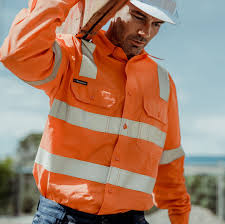industrial smart safety helmet
Industrial safety helmets are critical in safeguarding workers' heads in hazardous environments. Their importance cannot be overstated, as they act as a primary line of defense against head injuries caused by falling objects, debris, and electrical hazards. Drawing from years of industry expertise and real-world experience, this article delves into the key features, benefits, and best practices for selecting and using industrial safety helmets, ensuring both safety and compliance with protective standards.

An industrial safety helmet's design incorporates materials like high-density polyethylene (HDPE) and advanced engineering to disperse impact forces effectively. These helmets provide essential protection in various industrial settings, including construction, manufacturing, and power generation. Beyond physical protection, safety helmets bolster a safety culture within organizations, emphasizing a commitment to worker well-being and operational safety.
When selecting an industrial safety helmet, consider the specific hazards present in the workplace. Helmets are categorized by their protective capabilities, such as resistance to penetration, impact absorption, and electrical insulation. For instance, Type I helmets are designed to protect against impacts to the top of the head, while Type II helmets offer lateral impact protection. Additionally, Class E helmets offer electrical insulation up to 20,000 volts, which is crucial in environments with electrical hazards.

Proper fit and comfort are paramount to a safety helmet's effectiveness. A well-fitted helmet should sit snugly without being too tight and allow for adjustable suspension systems to accommodate different head sizes. Ventilation features can prevent heat buildup, ensuring comfort during prolonged use. It's essential to select helmets that comply with recognized safety standards like ANSI Z89.1 or EN 397, which guarantee a level of quality and reliability.
Real-world usage of safety helmets reveals their critical role in accident prevention. Case studies from construction sites highlight instances where helmets have successfully prevented severe head injuries, underscoring their value in daily operations. Equipping workers with the right helmets and ensuring their proper use not only protects individuals but also reduces liability and potential downtime for companies.
industrial safety helmet
Maintaining the integrity of industrial safety helmets is crucial. Regular inspections should be conducted to identify any signs of wear, cracks, or degradation caused by exposure to chemicals or UV radiation. A helmet's service life typically spans from 2 to 5 years, depending on usage and conditions. Employees should be trained to recognize when a helmet needs replacement and understand the limitations of reusing or repairing compromised equipment.
The authority on industrial safety helmets stems from adherence to rigorous testing and continuous improvements in design and materials. Manufacturers invest in research and development to introduce enhanced features like chin straps for added security, integrated face shields for eye protection, and advanced materials that reduce weight while maintaining strength.
Trust in the efficacy of industrial safety helmets is reinforced by documented successes in reducing injury rates and by the ongoing commitment of manufacturers to meet and exceed safety standards. Transparent communication from companies about the capabilities and limitations of their helmets fosters an environment of trust and informed decision-making.
In conclusion, industrial safety helmets are an indispensable component of workplace safety strategy. Selecting the appropriate helmet, ensuring its proper fit and maintenance, and staying informed about advancements in helmet technology are critical steps in protecting workers and upholding safety standards. Through expertise, authority, and trustworthiness, industrial safety helmets continue to stand as a testament to the unwavering dedication to occupational safety.
-
Top HDPE Safety Helmets - Lightweight, Durable Head Protection
NewsAug.01,2025
-
Top AI Safety Clothing with GPT-4 Turbo | Smart Protection
NewsJul.31,2025
-
Face Shield Safety Helmet with GPT-4 Turbo AI Safety
NewsJul.31,2025
-
CE Working Clothing for Construction & Welding Safety
NewsJul.30,2025
-
Premium Safety Helmet with Visor for Construction & Industrial Use
NewsJul.29,2025
-
High-Quality CE Working Clothing for Safety and Construction
NewsJul.29,2025
